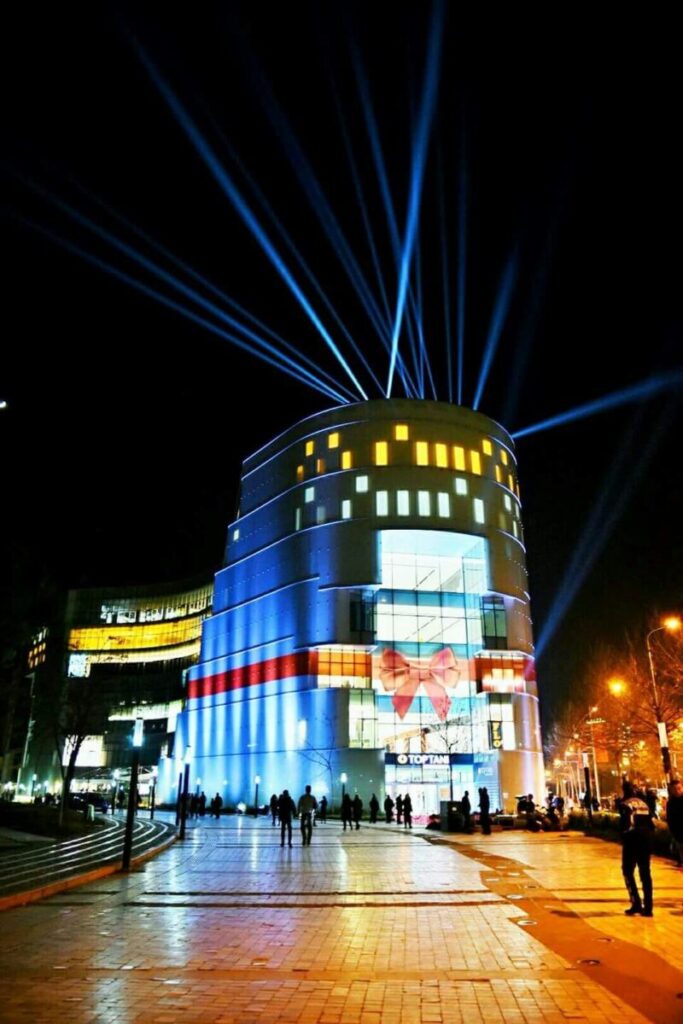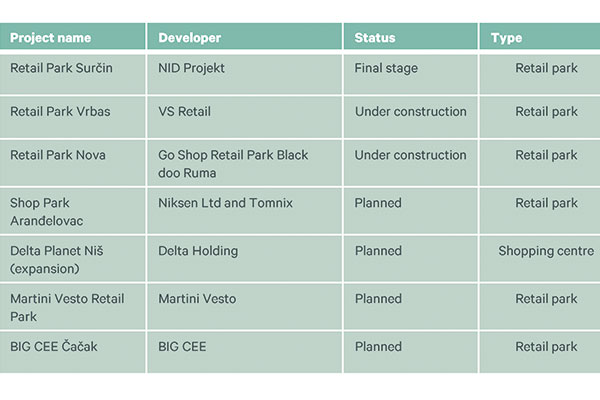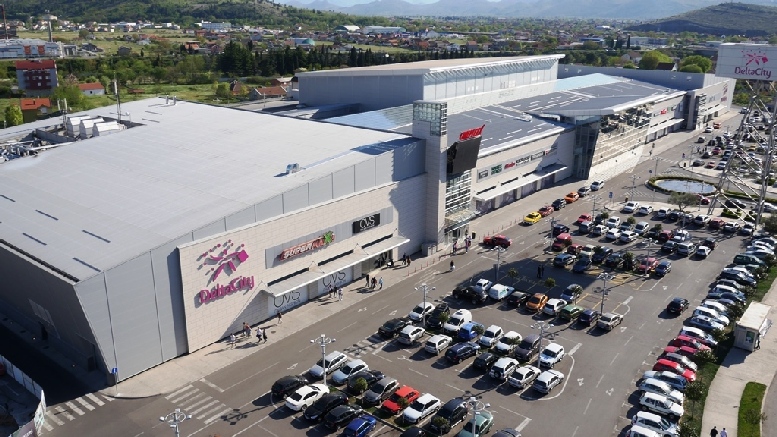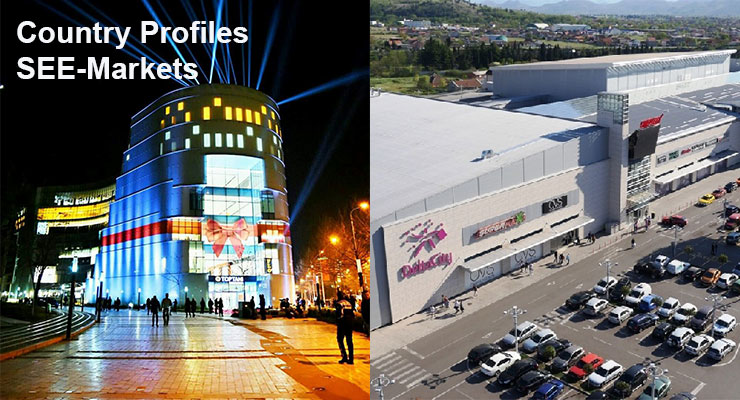Albania
Population: around 2.8 million people; 60% of the population lives in urban areas
Purchasing Power: The purchasing power of Albanians has been on the rise, there is a growing middle class, and the cost of living is relatively low compared to other European countries. According to the World Bank, GDP per capita in Albania was 4,800 euros in 2020. The middle class is growing, and demand for products and services is increasing. Albanian consumers tend to prioritize quality and affordability in their purchasing decisions. The consumer market is strongly influenced by trends in neighboring countries, such as Italy and Greece.
Retail Space: The number of shopping centers has increased, especially in urban areas, such in the capital, Tirana. The retail market is dominated by a few major players, but there is also a significant presence of local businesses.
Projects and Project Pipeline: There are several major infrastructure projects currently underway in Albania, including the construction of a new airport in the southern city of Vlora and the expansion of the port in the northern city of Shkoder.
Retail Space Growth: The retail sector has seen significant growth, with new shopping centers opening across the country. Some of the major shopping centers in Albania include Tirana East Gate, QTU, and Toptani Shopping Center.
Retail Projects: Albania has several major retail projects currently underway, including the redevelopment of the former National Museum of History into a mixed-use development featuring retail and office space, and the construction of a new shopping center in Tirana called “The Mall of Tirana”.

Toptani Shopping Center, developed by Albanian company Gener2, was inaugurated in March 2017 and has about 12,790 sq m of retail space, covering seven above ground floors, with four underground floors for parking. It accommodates 80 shops, 5 cafes, 2 restaurants, and has approximately 600 available parking spaces.
Serbia
Population: around 6.9 million people; 60% of the population lives in urban areas
Purchasing Power: Serbia is experiencing increasing demand for products and services, especially in urban areas, such as Belgrade, Novi Sad, and Niš. The country has experienced economic growth and development in recent years, which has led to an increase in consumer spending. The GDP per capita is approximately 7,322 euros. The COVID-19 pandemic has had a significant impact on consumer behavior in Serbia, with many people turning to online shopping and contactless payments. Demand for health and wellness products and services has also increased. There is also an increasing trend toward sustainable and environmentally friendly products.
Retail Space: The retail market in Serbia has grown steadily in recent years, particularly in urban areas. The retail market is dominated by a few major players, but there is also a significant presence of local businesses. A growing e-commerce market can also be found in the country, particularly in the areas of fashion, electronics, and home goods.
Retail Space Growth: The retail market has been growing steadily. According to a report by Colliers International, the total retail stock in the country stood at around 1.49 million sq m at the end of 2020, with around 52% of that space located in shopping centers. The report also notes that there are several large-scale retail projects in the pipeline, including the construction of new shopping centers and the expansion of existing ones.
Retail Projects: Infrastructure projects include the construction of highways, railways, and airports. In addition, there are several real estate and retail projects in the pipeline, including the expansion of existing shopping centers and the development of new ones.
Notable Pipeline Projects by type (source: CBRE)

Bosnia and Herzegovina
Population: around 3.2 million people; 48% of the population lives in urban areas
Purchasing Power: The purchasing power of Bosnians is relatively low compared to other European countries, with a GDP per capita of 4,415 euros in 2020, according to the World Bank. The middle class is growing, and demand for products and services is increasing. The consumer market is strongly influenced by trends in neighboring countries, such as Croatia and Serbia. Demand for imported goods is increasing, especially in urban areas, and consumers are increasingly interested in health and wellness products.
Retail Space: The number of shopping centers has grown, particularly in urban areas, such as Sarajevo and Banja Luka. The retail market is dominated by a few major players, but there is a significant presence of local businesses.
Projects and Project Pipeline: Several major infrastructure projects are currently underway, including the construction of new highways, railways, and energy infrastructure.
Retail Space Growth: The retail sector in Bosnia and Herzegovina is still developing and concentrated in larger cities, such as Sarajevo, Banja Luka, and Mostar. The major shopping centers in Bosnia and Herzegovina include BBI Center Sarajevo, Delta City Banja Luka, and Mepas Mall Mostar.
Retail Projects: New major retail projects include the construction of a new shopping center in Sarajevo called “Sarajevo City Center” and the expansion of the BBI Center in Sarajevo.
Montenegro
Population: around 622,000 people; 67% of the population lives in urban areas
Purchasing Power: According to the World Bank, Montenegro has a GDP per capita of 8,905 euros. The country has implemented significant economic reforms over the past decade to improve the business environment and attract foreign investment. The Montenegrin market has grown steadily in recent years, with increasing demand for products and services. Montenegrin consumers tend to prioritize quality over price in their purchasing decisions.
Retail Space: The moderate increase is particularly visible in urban areas, such as Podgorica and Budva. The retail market is dominated by a few major players, but there is also a significant presence of local businesses.
Projects and Project Pipeline: Montenegro has recently undertaken several major infrastructure projects, including the construction of new highways, airports, and tourism-related projects. These projects are expected to have a significant impact on the economy, particularly in the tourism sector.
Retail Space Growth: According to a report by CBRE, the retail market in Montenegro has been growing steadily over the past few years, driven by factors such as rising tourist arrivals and increasing consumer spending. The report notes that there is a limited supply of modern retail space in the country, which presents opportunities for further development. Delta City, Mall of Montenegro, and Bazar, all of which are based in the capital city of Podgorica, are the newest major shopping centers.

Kosovo
Population: around 1.8 million people; 55% of the population lives in urban areas
Purchasing Power: According to the World Bank, GDP per capita in Kosovo was 4,028 euros in 2020. The middle class is growing, and there is an increasing demand for products and services. The consumer market is strongly influenced by trends in neighboring countries, such as Albania and Serbia. There is a growing demand for imported goods, especially in urban areas, and consumers are increasingly interested in health and wellness products.
Retail Space: The number of shopping centers has grown, particularly in urban areas, such as Pristina and Prizren. The retail market is dominated by a few major players, but there is also a significant presence of local businesses. Some of the major shopping centers in Kosovo include Albi Mall, The Village Shopping and Fun, Grand Store Pristina, Prishtina Mall, Central Park, etc.
Projects and Project Pipeline: There are several major infrastructure projects currently underway in Kosovo, including the construction of new highways, railways, and energy infrastructure.
Retail Projects: Kosovo has several major retail projects currently underway, including the construction of a new shopping center in Pristina called “Dukagjini Valley” and the expansion of existing shopping centers, such as Albi Mall.
North Macedonia
Population: around 2 million people; 58% of the population lives in urban areas
Purchasing Power: According to the World Bank, GDP per capita is around 6,117 euros. The country has implemented significant economic reforms over the past decade in an effort to improve the business environment and attract foreign investment. In terms of consumer trends, North Macedonia has seen an increase in demand for products and services, especially in urban areas.
Retail Space: The retail market has grown steadily in recent years, particularly in urban areas, such as Skopje and Bitola. The retail market is dominated by a few major players, but there is also a significant presence of local businesses. A growing e-commerce market can also be found in the country, particularly in the areas of fashion, electronics, and home goods.
Projects and Project Pipeline: North Macedonia has recently undertaken several major infrastructure projects, including the construction of new highways, airports, and tourism-related projects. These projects are expected to have a significant impact on the economy and consumer trends in the country.
Retail Space Growth: The retail market has grown steadily over the past few years, driven by factors such as rising consumer spending and the development of modern retail formats. The retail market has become increasingly competitive, with international retailers entering the market and local players expanding their operations. The major shopping centers, Skopje City Mall, Ramstore Mall, and Skopje East Gate, are concentrated in the capital.
Retail Projects: New major retail projects include the renovation of the Ramstore Mall.






